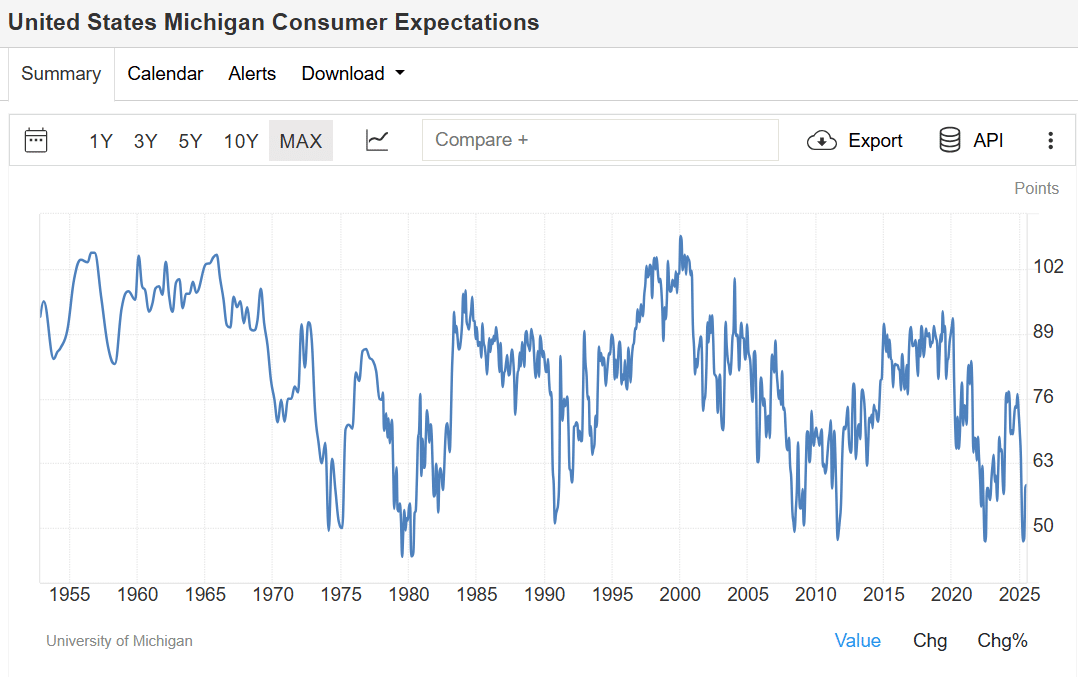Why the Best Market Predictors Are Surprisingly Simple


The Role of Consumer Confidence in Predicting Market Trends
I’ll always be grateful to my statistics professor, Ms. Carol Marchetti, who encouraged me to study statistics at the University of Rochester. That one suggestion changed how I view the world, especially the financial world. Without that training, I might have missed many of the best market predictors that were hidden in plain sight.
In this article, we’ll explore how simple statistical signals often outperform complex financial models. This pattern is evident in genetics, personal wealth, and particularly in the markets.
What Genetics Can Teach Us About Predictability
In genetics, the best predictor of someone’s height is the height of their parents. While things like nutrition, exercise, and sleep do matter, they don’t shift the outcome very much. You could build a complex model that includes diet, sleep, and activity levels, but it likely won’t outperform a simple model based only on parental height.
The takeaway here is important. In many areas of life, especially those influenced by biology or human behavior, simpler models tend to reveal more than complicated ones.
The same principle applies to economics and finance.
How Real Estate Predicts Wealth Better Than Flashy Assets
Most people think that visible signs of wealth, such as luxury cars, designer watches, or the latest technology, are reliable indicators of financial success. But statistics say otherwise. The best single predictor of an individual’s net worth is actually the value of their primary residence.
While expensive items are often seen as status symbols, they’re also depreciating assets. Real estate, on the other hand, tends to increase in value over time. It’s both a place to live and a long-term investment.
This highlights a core issue in predictive modeling, known as multicollinearity among statisticians. When too many similar or correlated variables are included in a model, they can interfere with each other and reduce the model’s accuracy. Models that try to use watches, cars, and clothes as signals often fall apart because those items are highly correlated but not very predictive.
In contrast, home ownership and real estate value remain one of the strongest indicators of personal wealth.
Why Consumer Confidence Is One of the Best Market Predictors
Let’s apply the same thinking to the financial markets. One reader recently asked why the inverted yield curve in 2023 and 2024 didn’t lead to a recession. Historically, inverted curves have signaled downturns with surprising accuracy.
But this time, no recession followed. Why not?
The answer is that the yield curve is no longer one of the best market predictors, at least not by itself.
Today, consumer confidence is a stronger and more reliable signal of where the economy is headed. It reflects how people feel about their job security, savings, future income, inflation, and overall financial wellbeing.
Unlike technical indicators that track market behavior retrospectively, consumer confidence gives us a real-time look at how households and consumers plan to act. And because consumer spending drives more than two-thirds of economic activity in the United States, their expectations have significant predictive power.
Why Simple Indicators Often Work Better Than Complex Ones
We see the same principle repeating. In many cases, complex models packed with data points underperform compared to single-variable models that focus on the most relevant predictor.
That’s because adding variables doesn’t always improve accuracy. In fact, it can make predictions worse if those variables are correlated or poorly measured.
Consumer confidence performs well because:
-
It captures a wide range of underlying economic factors.
-
It adjusts quickly in response to news and events.
-
It’s forward-looking and behaviorally driven.
Compared to more technical indicators like bond spreads, debt ratios, or fiscal metrics, consumer confidence may seem subjective, but in practice, it consistently outperforms.
Where Consumer Confidence Stands Today
As of mid-2025, U.S. consumer expectations remain quite low. At first glance, that might sound negative, but historically, low consumer sentiment has often marked turning points in the market.
When expectations are at their lowest, bad news is already priced in. Any positive momentum can drive surprising recoveries. While this doesn’t guarantee a bright future, it does suggest the probability of improvement is rising.
What the Best Market Predictors Have in Common
The same lesson keeps surfacing across different areas, whether we’re talking about biology, wealth, or financial markets.
Simple, statistically powerful predictors tend to outperform more complicated ones. That’s because they avoid noise, multicollinearity, and unnecessary complexity.
Whether it’s parental height, the value of your home, or the confidence of consumers, a strong single signal often tells you more than a dozen weak ones combined.
If you’re looking for signals in a noisy market, the best place to start is with what consistently works, simple indicators backed by data.
In 2025, the best market predictors are not necessarily what financial media focuses on. But they are the ones that quietly, reliably, and repeatedly point in the right direction.
Get the trading edge you need in today’s markets – sign up for our monthly newsletter featuring in-depth expert analysis, hot market insights, and exclusive trading strategies.

